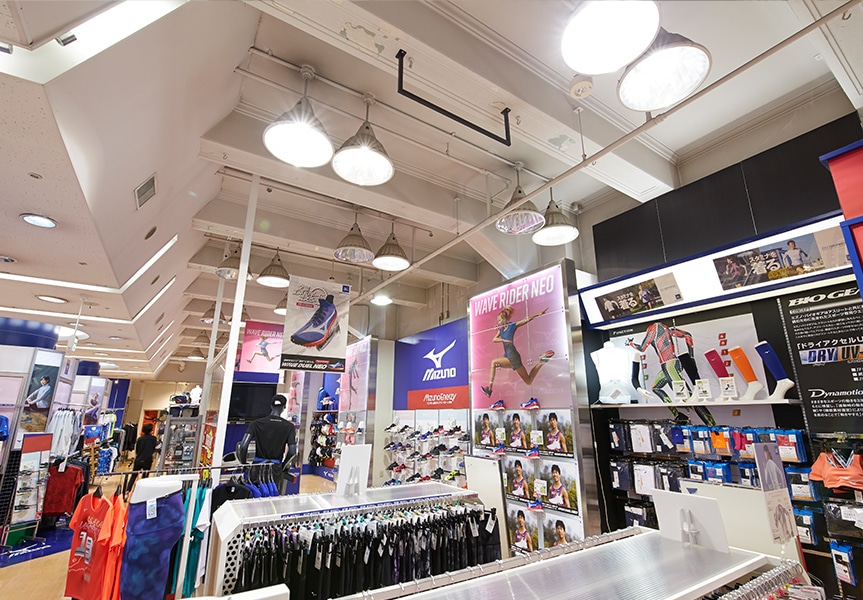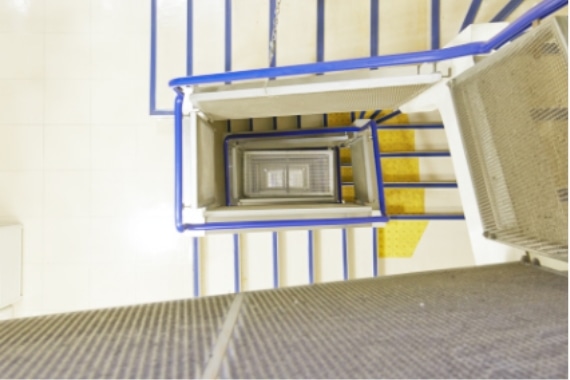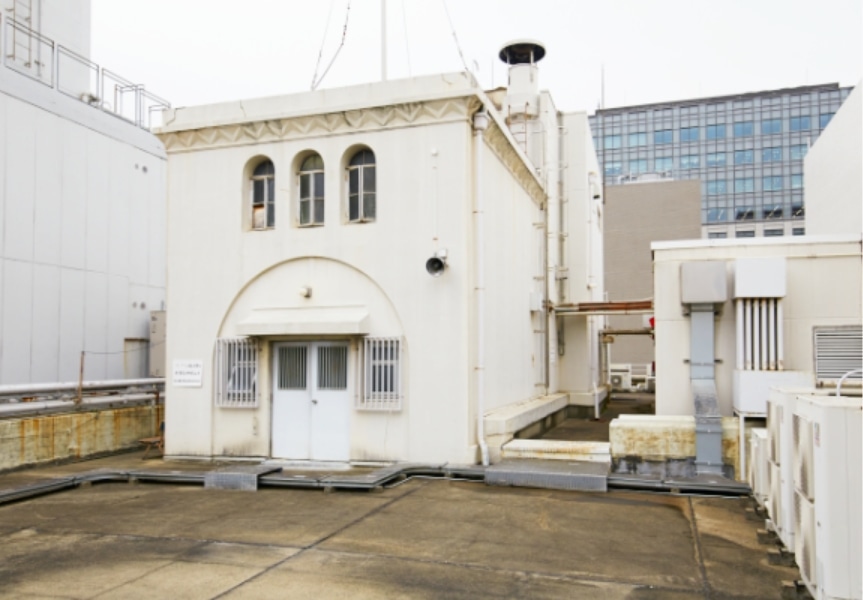
Pillars and ceiling joists
Ceiling joists in the sales area on the 1st floor and pillars and ceiling joists in the sales area on the 2nd floor


Both pillars and joists were installed at much narrower intervals than usual.
This is probably because it was designed right after the Great Kanto Earthquake and they carefully considered seismic resistance. Besides, it had been only 20 to 30 years then since reinforced concrete buildings started to be built. Therefore, there must have been so much uncertainty regarding their strength and durability. For that reason, I presume that they set the safety standard high and ended up designing the intervals between joists short.
However, in fact, concrete back then used gravel from rivers. Thus, it was higher in quality and strength than current concrete which uses crushed stone.
Also, the part called the haunch, which is an edge of a joist attached to a pillar, is slanting, and designed bigger and wider than other parts. This improves strength against tremors, and at the same time, the designer’s wish to make the height under the joists as high as possible since it is a shop space is reflected in them.



